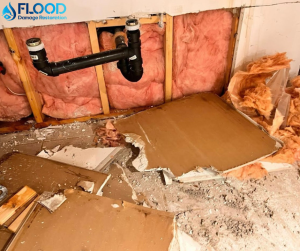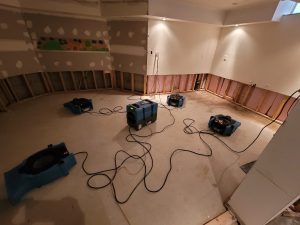Introduction
Mold, a common problem in many households, can pose significant risks to both your health and the integrity of your property. It’s crucial to detect and address mold issues promptly to ensure a safe and healthy living environment. In this comprehensive guide, we will walk you through the process of mold remediation, providing you with the necessary knowledge to tackle this potentially harmful problem. From understanding mold to conducting a thorough inspection and implementing effective remediation strategies, we’ve got you covered.
Understanding Mold
Before delving into the process of mold remediation, it’s important to have a clear understanding of what mold is and why it can be harmful. Mold is a type of fungi that thrives in damp and humid conditions. It typically appears as black, green, or brown patches on surfaces and often emits a musty odour. Mold can grow on various materials such as wood, drywall, carpet, and fabrics, and it spreads through the release of spores into the air. Exposure to mold spores can cause a range of health issues, including respiratory problems, allergies, and skin irritation.
Signs of Mold Infestation
Detecting a mold infestation in your home can be challenging as it often grows in hidden or hard-to-reach areas. However, there are several signs that may indicate the presence of mold:
- Visible mold growth: Look for discoloured patches on walls, ceilings, or other surfaces. Mold often appears as black, green, or brown spots.
- Musty odour: If you notice a persistent musty smell in your home, it could be an indication of mold growth.
- Water damage: Mold thrives in damp environments, so any areas with water leaks, condensation, or flooding are susceptible to mold infestation.
- Allergic reactions: If you or your family members experience allergic symptoms such as sneezing, coughing, or itchy eyes when inside your home, mold could be the culprit.
- Warped or discoloured materials: Mold can cause materials like wood and drywall to warp, crack, or become discoloured.
Conducting a Visual Inspection
To determine the extent of a mold problem in your home, start by conducting a visual inspection. Take note of any visible signs of mold growth, such as discoloured patches or fuzzy spots. Pay close attention to areas with water damage, such as basements, bathrooms, and kitchens, as these are common hotspots for mold growth. Inspect hidden areas like crawl spaces, attics, and behind furniture. It’s important to be thorough, as mold can often hide in hard-to-reach areas.
During your visual inspection, make sure to wear protective gear such as gloves, goggles, and a mask to avoid direct contact with mould spores. If you come across any suspicious signs of mold, it’s recommended to take air and surface samples for further testing.
Testing for Mold
While a visual inspection can provide some insight into the presence of mold, it’s often necessary to conduct testing for a more accurate assessment. Professional mold testing services use specialized equipment to gather air and surface samples, which are then analyzed in a laboratory. This testing can determine the type and concentration of mold present in your home.
There are different types of mould tests available, including air sampling, surface sampling, and bulk sampling. Air sampling measures the concentration of mold spores in the air, while surface sampling involves swabbing or tape-lifting samples from visible mold growth. Bulk sampling is used when larger materials, such as pieces of drywall or insulation, need to be tested.
Mold Remediation Process
If mold is detected in your home, it’s essential to initiate the mold remediation process as soon as possible. Here are the key steps involved in mould remediation:
- Containment: Before starting any remediation work, it’s important to contain the affected area to prevent the spread of mold spores to other parts of the house. This can be done by sealing off the area with plastic sheets and using negative air pressure machines to create a vacuum effect.
- Removal of Affected Materials: Remove any materials that are heavily contaminated with mold, such as drywall, carpeting, or insulation. These materials may need to be discarded to prevent further mold growth.
- Cleaning: Thoroughly clean all surfaces in the affected area using appropriate mould cleaning solutions. Scrub the surfaces and ensure that all visible mold is removed. It’s important to use personal protective equipment during the cleaning process to minimize exposure to mold spores.
- Drying: After cleaning, ensure that the area is thoroughly dried to prevent mould from regrowing. Use dehumidifiers and fans to reduce moisture levels and promote proper airflow.
- Prevention: Identify and address the source of moisture that caused the mold growth. Repair any leaks, improve ventilation, and maintain humidity levels below 50% to prevent future mold problems.
- Post-Remediation Verification: After completing the mold remediation process, it’s recommended to conduct a final inspection and testing to ensure that all mold has been effectively removed. This step provides assurance that the remediation was successful and that your home is now mold-free.
DIY vs. Professional Mold Remediation
While some small-scale mold problems can be addressed through DIY methods, it’s important to note that larger or extensive mould infestations require professional mold remediation services. Professional remediation companies have the expertise, equipment, and knowledge to handle complex mold issues safely and effectively. They can ensure that mold is thoroughly removed and that the underlying cause of the mold growth is addressed to prevent future problems.
Preventing Future Mold Growth
To minimize the risk of mold growth in your home, it’s crucial to take preventive measures. Here are some tips to help prevent future mold problems:
- Control moisture: Keep your home well-ventilated and maintain appropriate humidity levels. Use dehumidifiers in damp areas like basements and bathrooms.
- Address water leaks promptly: Repair any leaks in pipes, roofs, or windows to prevent water damage and the subsequent growth of mold.
- Proper ventilation: Ensure that your home has adequate ventilation, especially in areas prone to moisture, such as bathrooms and kitchens. Use exhaust fans or open windows to improve airflow.
- Monitor indoor humidity: Use a hygrometer to monitor indoor humidity levels and maintain them below 50%.
- Regular inspections: Conduct regular inspections of your home, especially in areas susceptible to moisture, to catch any potential mold issues early.
Conclusion
Mould remediation is a crucial process for maintaining a safe and healthy living environment. By understanding the signs of mold infestation, conducting thorough inspections, testing when necessary, and implementing effective remediation strategies, you can successfully tackle mold problems in your home. Remember, if you’re dealing with extensive mold growth or are uncertain about the remediation process, it’s always best to seek professional assistance. By taking preventive measures and addressing mold issues promptly, you can ensure a mold-free home for you and your family.
For professional mold remediation services in your area, contact our team at (647) 763-5662. We have the expertise and experience to handle all your mold-related concerns.



